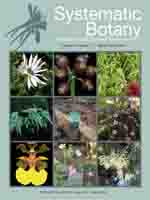Piresia is a low growing perennial grass in the tribe Olyreae (Poaceae, Bambusoideae). It differs from other herbaceous bamboos in having dimorphic culms: aerial ones bear broad and flat leaf blades at the top and rarely develop an inflorescence, and decumbent ones usually bear reduced leaves or bladeless leaf sheaths, with inflorescences that are raceme-like, few-flowered, and often hidden under the litter. Four species are accepted in this genus, and a fifth one is described and illustrated herein, Piresia palmula. This new species resembles P. leptophylla in having narrow leaf blades, but differs in the number of aerial culms, texture of leaf blades, and in the number and size of inflorescences on both aerial and decumbent culms. Both species are associated with rainforest remnants, but display distinct patterns of geographic distribution and environmental conditions. Piresia leptophylla occurs in northern South America and northeastern Brazil (Bahia to Paraíba), often in sandy soils, especially in “Restinga” forests, whereas the new species is known only from Michelin's Ecological Reserve, in southern Bahia, growing on rocky substrate in a humid environment. For these reasons it is considered as CR (critically endangered) according to IUCN criteria.
How to translate text using browser tools
1 January 2012
Piresia palmula: A New Species of Herbaceous Bamboo (Poaceae, Olyreae) Endemic to the Atlantic Rainforest, Southern Bahia, Brazil
Maria Luiza S. de Carvalho,
Marcos C. Dórea,
Karena M. Pimenta,
Reyjane P. de Oliveira
ACCESS THE FULL ARTICLE

Systematic Botany
Vol. 37 • No. 1
January 2012
Vol. 37 • No. 1
January 2012
grasses
IUCN Red List
taxonomy




